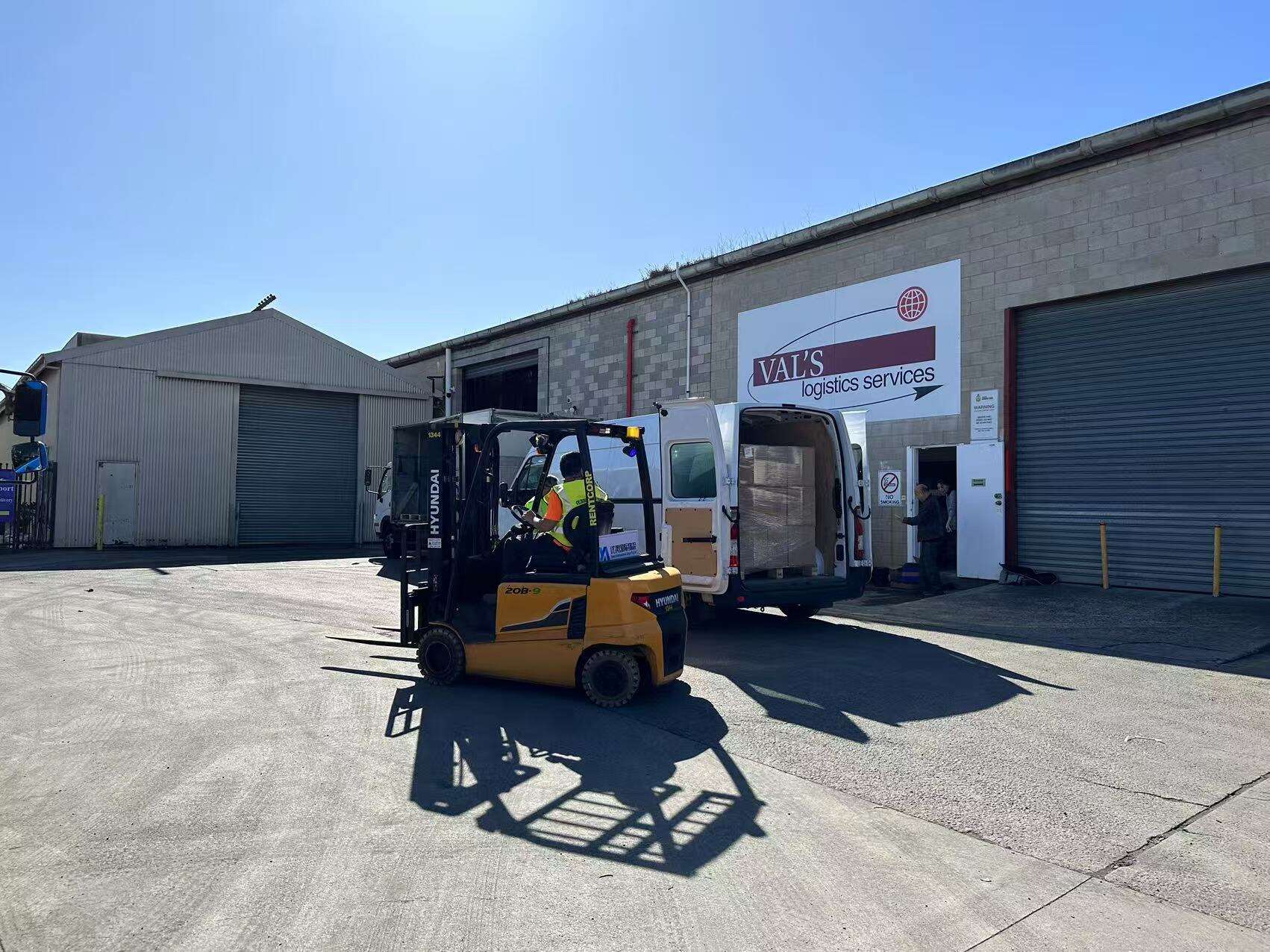Complying with Freight Transportation Safety Regulations
Key Regulatory Bodies: FMCSA, DOT, and OSHA in Freight Operations
Three federal agencies govern freight transport safety:
- The Federal Motor Carrier Safety Administration (FMCSA) enforces driver qualifications, hours-of-service limits, and vehicle maintenance standards.
- The Department of Transportation (DOT) mandates cargo securement rules and hazardous material handling protocols.
- The Occupational Safety and Health Administration (OSHA) ensures workplace safety during loading/unloading operations.
Non-compliance with these agencies’ safety guidelines can result in fines exceeding $16,000 per violation (FMCSA 2023).
Mandatory Compliance Standards for FDA, DOT, and Industry-Specific Regulations
Freight carriers must adhere to:
- DOT’s North American Cargo Securement Standard: Requires one tie-down per 10 feet of cargo length and straps rated for half the total load weight.
- FDA Sanitation Protocols: Critical for food/medical shipments to prevent contamination.
-
Specialized Rules: Oversize loads (>80,000 lbs) demand route-specific permits and escorts.
Proactive alignment with the FMCSA’s cargo securement framework reduces audit risks by 40% (Ponemon 2023).
Avoiding Penalties and Mitigating Risks Through Proactive Compliance
Companies with repeat DOT violations face 23% higher insurance premiums and operational suspensions. Best practices include:
- Monthly driver training on Hours-of-Service (HOS) logging
- Pre-trip inspections documenting brake/tire conditions
- Real-time ELD (Electronic Logging Device) monitoring
Firms adopting compliance automation tools report 57% fewer safety incidents annually.
Proper Load Securement and Cargo Handling Best Practices
Effective Tie-Down Methods and Securement Techniques by Cargo Type
How cargo stays secured during transport makes all the difference when it comes to keeping freight safe on the road. According to recent Department of Transportation data from 2023, around one out of every five cargo losses happens because loads weren't properly fastened down. When moving heavy equipment, professionals typically rely on grade 70 transport chains along with tension devices that can handle at least 1.5 times what the load actually weighs. Pallet stacks require different treatment though they usually need those special non-slip mats underneath plus some good quality cross strapping across them. Electronics that are delicate or expensive demand extra care too. Many companies now install specialized air ride suspensions in their trucks to absorb vibrations, and fill empty spaces between items with proper dunnage material to keep everything from shifting around during transit.
Understanding Working Load Limits (WLL) and Equipment Safety Checks
WLL calculations must account for both vertical and horizontal forces during transit. A 10,000 lb steel coil generates 50% more lateral force during sudden braking than its static weight, requiring chains with minimum 6,750 lb WLL capacity. Daily pre-trip inspections should verify:
- No fraying or rust on tie-downs
- Proper functionality of load bars and E-track systems
- Correct torque on tensioners (per manufacturer specs)
Roles and Responsibilities: Carrier vs. Shipper in Load Safety
Shippers must provide accurate cargo dimensions/weights and specify pressure points, while carriers verify securement complies with FMCSA 393.130 regulations. A 2023 study found 67% of load-shift incidents stem from communication gaps in this handoff process.
Standardized Loading/Unloading Procedures to Reduce Workplace Hazards
Implementing OSHA-aligned protocols reduces loading zone injuries by 38%. Key steps include:
- Using dock locks and chocks before forklift operations
- Maintaining 3:1 ramp slope ratios for manual unloading
- Prohibiting "walking the load" during crane-assisted placements
Industry leaders now mandate VR simulations for high-risk cargo handlers, decreasing procedural violations by 81%.
These layered strategies create a safety-first framework that protects personnel, cargo, and public roadways throughout the transport lifecycle.
Preventing Cargo Damage During Transit
Best practices in packaging, stacking, and weight distribution
Good packing practices and how things are loaded can stop around 40% of all damage claims when shipping stuff by truck or ship. Fragile items need protection from crushing forces so double wall boxes work best here. Irregular shaped packages should go on pallets properly arranged so they don't move around too much during transit. Always put heavy items at the base of containers and center them for balance reasons. Lighter stuff goes on top naturally. According to some research published last year in logistics journals, spreading out weights evenly on pallets cuts down movement problems by about two thirds when vehicles come to sudden stops. Makes sense really because nobody wants their shipment damaged just because someone packed it wrong.
Minimizing transit damage through proper handling and stabilization
Ratchet straps, edge protectors and airbags work together to soak up kinetic energy while things are moving around during transport. Before hitting the road, drivers need to check their loads make sure nothing goes over the working load limit (WLL) and confirm all restraints comply with those FMCSA regulations everyone keeps talking about. When warehouses combine materials that resist moisture with padding that absorbs shocks, they cut down on damage from vibrations quite a bit. Getting warehouse staff properly trained on using those sensors built into forklifts makes a world of difference too. Companies report saving well over $280,000 each year just by preventing compression damage when stacking products properly.
Safe Transportation of Hazardous Materials (Hazmat)
Hazmat Classification and Special Handling Requirements
In the United States, hazardous materials are grouped into nine main categories of danger, such as explosives, flammable liquids, and things that eat through metal or skin. Each category needs special care when handled. Keeping different chemicals apart is really important to stop dangerous reactions from happening. For instance, oxidizers should stay far away from anything that can catch fire, and acidic stuff shouldn't mix with bases at all. When shipping large amounts of hazardous material, which means more than 119 gallons of liquid or 882 pounds of solid material, companies have to use containers certified by the UN standards that include pressure relief systems. Smaller shipments still need protection too, so they often come with shock absorbing materials like vermiculite lining to prevent damage during transport.
Regulatory Compliance and Documentation for Hazmat Freight Transport
When it comes to shipping dangerous goods, companies need to follow the rules set out in the Hazardous Materials Regulations found in 49 CFR Parts 100 through 185. The paperwork involved is pretty substantial too. Shippers have to fill out multiple copies of manifests that include things like the UN ID number for each material, what they're officially called during transport, and who to call in case something goes wrong. Failing to comply can get really expensive fast. According to the PHMSA report from last year, fines went over $74,000 for each violation caught. A lot of these violations come down to simple mistakes actually. About one third of all fines were issued because the hazard labels didn't match what was being shipped, while nearly a quarter stemmed from employees having outdated training certifications on file.
Emergency Response Planning for Hazmat Incidents
Hazmat transport companies need to keep emergency response guides specific to each site right there in the driver's cab area. These should include diagrams for containing spills and instructions for basic first aid situations. Looking at numbers from OSHA in 2024, we see something interesting happening. Fleets that run their hazmat training exercises every three months actually cut down on serious incidents by about 41 percent when compared to those who only do annual sessions. And it gets better. The FMCSA reports show drivers who complete the full 40 hours of HAZWOPER certification respond to leaks nearly 68% quicker than others. Makes sense really, proper preparation saves lives and money alike.
Enhancing Freight Security with Technology and Driver Training
Real-time tracking, telematics, and IoT for shipment monitoring
Modern GPS tracking systems combined with IoT sensors provide 24/7 visibility into freight conditions and location data. By integrating industry-standard monitoring systems, carriers can detect route deviations or unauthorized stops within seconds, enabling rapid response to potential security threats.
Route optimization and data-driven insights for safer transit
Analyzing historical traffic patterns and weather forecasts through telematics allows fleets to avoid high-risk areas and reduce accident rates by up to 22%. Machine learning algorithms further enhance safety by recommending optimal speeds and rest intervals based on real-time road conditions.
Professional driver training and fleet maintenance protocols
Businesses implementing certified training programs for defensive driving and hazardous material handling report 40% fewer accidents (CLWT Logistics 2023). Regular vehicle inspections paired with predictive maintenance software extend equipment lifespan while ensuring compliance with DOT brake performance standards.
FAQ Section
What is the FMCSA's role in freight transportation?
The FMCSA (Federal Motor Carrier Safety Administration) enforces driver qualifications, hours-of-service limits, and vehicle maintenance standards to ensure safe freight transportation.
How can companies avoid penalties related to freight transportation?
Companies can avoid penalties by adhering to compliance standards set by agencies such as the DOT, conducting regular training, inspections, and utilizing real-time monitoring systems.
What is the importance of proper load securement techniques?
Proper load securement techniques are crucial for preventing cargo losses and ensuring the safety of freight during transport. Techniques vary depending on cargo type.
How does OSHA contribute to safety in freight operations?
OSHA ensures workplace safety during loading and unloading operations, reducing workplace hazards through standardized procedures.
What are the key steps in handling hazardous materials?
Handling hazardous materials involves complying with regulatory standards, maintaining detailed documentation, using proper containers, and having emergency response plans in place.
Table of Contents
- Complying with Freight Transportation Safety Regulations
- Proper Load Securement and Cargo Handling Best Practices
- Preventing Cargo Damage During Transit
- Safe Transportation of Hazardous Materials (Hazmat)
-
Enhancing Freight Security with Technology and Driver Training
- Real-time tracking, telematics, and IoT for shipment monitoring
- Route optimization and data-driven insights for safer transit
- Professional driver training and fleet maintenance protocols
- FAQ Section
- What is the FMCSA's role in freight transportation?
- How can companies avoid penalties related to freight transportation?
- What is the importance of proper load securement techniques?
- How does OSHA contribute to safety in freight operations?
- What are the key steps in handling hazardous materials?




